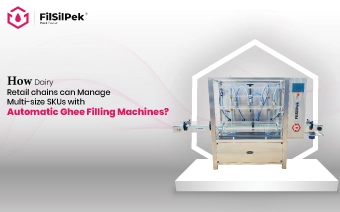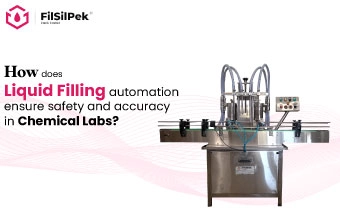Liquid Filling and Viscosity - Everything you need to understand
When you consider the process of filling a bottle of shampoo, a can of soda, or a jar of honey, the interaction between liquid filling and viscosity becomes a crucial aspect of manufacturing. This relationship is not only technical but also fascinating, as it ensures the consistency and quality of products we use every day.
Essentially, high viscosity means a liquid is thick and sticky, while low viscosity indicates it is thin and runny. Viscosity measures a fluid’s resistance to flow. If you think about pouring honey into a jar – it moves slowly and clings to the sides, representing high viscosity. In contrast, water flows freely and quickly, exhibiting low viscosity.
Let’s understand why viscosity is important and what kind of challenges viscosity throws in filling.
Why Should You Consider Product Viscosity?
Understanding product viscosity is crucial for optimising production processes and ensuring accurate liquid filling. Viscosity affects how liquids flow, influencing equipment choice and operational parameters. Low-viscosity liquids, like water, allow high-speed filling, while high-viscosity liquids, such as syrups, require specialised pumps and slower speeds to manage flow resistance and ensure precision.
Viscosity is also key to maintaining product quality and consistency. Variations can lead to inconsistencies in texture and stability, impacting consumer satisfaction and compliance with quality standards. Advanced filing systems with viscosity sensors can adjust in real-time, ensuring each unit meets specifications and reducing waste.
Considering viscosity is vital for cost efficiency and regulatory compliance. High-viscosity products can increase equipment wear and maintenance costs. Proper equipment tailored to specific viscosities can mitigate these issues, extending lifespan and reducing costs. Accurate viscosity control helps meet regulatory requirements, avoiding penalties and maintaining competitiveness
Challenges in High Viscosity Liquid Filling
1. Flow Control and Dispensing Accuracy: Ensuring precise control and accurate volume dispensing for thick liquids.
2. Dripping and Stringing: Preventing excess product from dripping or forming strings after nozzle retraction.
3. Air Entrapment: Avoiding air bubbles that can affect product quality and fill volume accuracy.
4. Heat Sensitivity:Managing temperature to prevent degradation of heat-sensitive high-viscosity products.
5. Equipment Wear and Maintenance:Reducing wear and tear on filling equipment caused by thick, sticky liquids.
6. Shear Sensitivity: Maintaining product integrity by minimising shear forces during the filling process.
How Automatic Liquid Filling Machines Help in Handling High Viscous Liquid Filling?
Automatic liquid filling machines are designed to address the unique challenges of filling high-viscosity liquids efficiently and accurately. Here’s how they help:
1. Enhanced Filling Accuracy: Automatic liquid filling machines are equipped with advanced control systems that ensure precise volume dispensing. This is crucial for high-viscosity liquids where manual filling could lead to significant inconsistencies and product waste.
2. Specialized Pump Systems:These machines often use positive displacement pumps or piston fillers, which are specifically designed to handle thick, sticky liquids. These pumps maintain consistent pressure and flow, ensuring smooth and controlled filling processes.
3. Cut-off Mechanisms: To prevent dripping and stringing, automatic filling machines are equipped with cut-off mechanisms such as rotary or guillotine-style valves. These mechanisms cleanly sever the product stream, reducing mess and product loss.
4. Temperature Control: Some automatic filling machines include heating elements to gently warm high-viscosity products, reducing their viscosity temporarily to facilitate easier filling. This is especially useful for heat-sensitive products, ensuring they flow more readily without degrading.
5. Vacuum-Assisted Filling:For products prone to air entrapment, vacuum-assisted filling systems can be used. These systems remove air bubbles from the product before filling, ensuring consistent fill volumes and maintaining product quality.
6. Durability and Maintenance:Automatic filling machines are built with durable materials and components that can withstand the rigours of filling high-viscosity liquids. They also often feature easy-to-clean designs, which help reduce maintenance time and extend the machine’s lifespan.
Conclusion:
Mastering liquid filling, especially with high-viscosity liquids, is crucial for ensuring product quality and efficiency in manufacturing. Automatic liquid filling machines offer tailored solutions to handle the complexities of thick liquids, providing precise filling and consistent results while streamlining production processes.
How dairy retail chains can manage multi-size SKUs with automatic ghee filling machines?
For dairy retail chains, offering ghee in various pack sizes has become …
How does liquid filling automation ensure safety and accuracy in chemical labs?
Chemical laboratories work with a broad spectrum of substances—acids, solvents, reagents, and volatile..
How Are Herbal Extract Producers Using Automatic Fillers for Glass Bottles and Droppers?
Herbal extract producers are under increasing pressure to meet demand…



